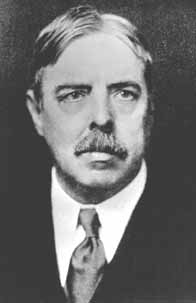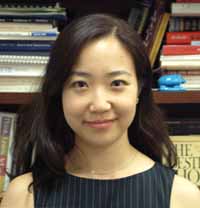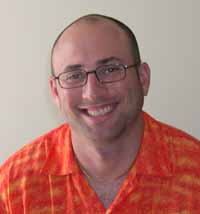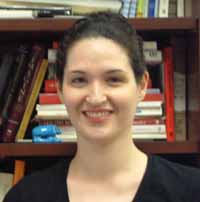Thinking Outside of the Box: 100 Years of Educational Psychology at TC
It was thinking outside of the box that led Edward Lee Thorndike to focus his life's work on learning.
In a series of "puzzlebox" experiments, Thorndike studied how animals learn through trial and error, which leads to the "stamping in" of correct responses. For example, he put a hungry cat in a box and gave it food when it escaped. Gradually the animal learned what it had to do to escape, as shown by the fact that the amount of time it took to escape became shorter. In this type of learning, the connection between the animal's situation and what it had to do to escape became stamped into its mind.
While working at TC, Thorndike applied these laws of associative learning to humans and to the practice of education, which led to the first book in Educational Psychology, called Educational Psychology in 1903. In this book, he discusses the "law of effect," which says that rewarded behaviors become more frequent. Over the years, he gradually he refined this law, making it one of his most important principles of education. He also challenged the educational doctrine of "formal discipline," which says that learning subjects like Latin will improve mental muscles and make students better learners.
"Thorndike's work is important because it put the study of learning and education on a scientific footing for the first time," said James Corter, Chair of the Human Development Department. Thorndike proposed that laws of learning established by animal experiments might show us how to better promote human learning.
Thorndike, who worked at TC for most of his career, believed that instruction should pursue specified, socially useful goals. In teacher training, he emphasized attention, memory, habit, mental training, and most importantly, experimental approaches to the study of learning and instruction. By the beginning of the First World War, Thorndike's accumulated work had succeeded in firmly establishing the field of educational psychology as a distinct discipline within psychology.
"Thorndike's profound influence was that he brought measurement to things that people didn't measure before," said Ernst Rothkopf, the Cleveland E. Dodge Professor Emeritus of Telecommunications and Education. "Educational Psychology had a tiny beginning at TC that turned into an explosive thing. Now, Educational Psychology departments are at most major universities."
His pioneer investigations in the fields of human and animal learning are among the most influential in the history of psychology. In 1912, Thorndike was recognized for his accomplishments and elected President of the American Psychological Association. In 1934, the American Association for the Advancement of Science elected Thorndike as the only social scientist to head this professional organization. Though he retired in 1939, he worked actively until his death 10 years later.
"Considered the father of Educational Psychology, Edward Lee Thorndike was devoted throughout his career to understanding the process of learning. His interest in and contribution to our understanding of learning ranged from studies with animals, children, and eventually with adults. With the exception of animal studies, Thorndike's legacy continues at Teachers College to this day in the form of a building named for him and through graduate programs that focus on child development and learning, adult learning, measurement and evaluation," said W. Warner Burke, Edward Lee Thorndike Professor of Psychology and Education.
Educational Psychology, now called "Cognitive Studies in Education" at Teachers College, has evolved from a behaviorist approach in Thorndike's day to a cognitive approach today. "Now, instead of talking about connecting external stimuli and responses, we talk about cognitive mental mechanisms," says John Black, the current Cleveland E. Dodge Professor and the Coordinator of the Cognitive Studies Program "We use mental models of mechanisms to improve performance and to design better learning environments."
Today's students have taken cognitive studies in education in different directions, but all have the same goal-to understand how a person learns and processes ideas. Some are developing educational technology based on cognitive theories. Others are looking at how children comprehend texts. Lately, there has been an upsurge of interest in this department doubling the enrollment in the last three years.
Lisa Tsuei, who is a doctoral student, was a science teacher in Seattle with a psychology background before coming to TC. As a science teacher, she saw that kids didn't have a good understanding of systems, so she became interested in classroom technologies to create visual aids to help with thinking about them.
To help children understand complex processes, she is researching the use of technology to support critical thinking and how the applications of human information processes can be modeled in computers.
The first phase of her study, inspired by a NASA-sponsored contest, involved getting middle school students to figure out what they would bring to a space station on Mars. The students said they would bring a dog or an oxygen tank, but almost none of them thought to bring items to create a system that would actually sustain life there, such as a tree that produces oxygen. Tsuei found that important connections were missing.
In the next phase of the study, the children will be asked to design a colony again. Through graphic representation and learning through causal relations, she hopes the children will think more about how and why rather than what. To help kids create the mental models of systems, they are using a piece of educational software that is already being used in schools.
"It is my hope that students can connect information on their own and understand that a system requires multiple variables and things that work together," said Tsuei. "The children are at an age where this type of thinking will be new, but it will be beneficial to all students at any level. They can use it throughout their educational careers."
Another doctoral student, Andrew Malinow, is working on designing software to help teachers in the classroom, specifically in mathematics. He has designed a program that helps teachers teach word problems with proportions. It gives students concrete visualizations of the abstract word problem and teaches them how to think that way themselves.
"Though it was originally intended as a tutor, it is much more powerful with a teacher there," said Malinow. "You can't replace a teacher's skills and strengths with a computer, nor should a computer be asked to."
Just as Thorndike was interested in theories of learning in reading, Joanna Williams, Professor of Psychology and Education, researches text comprehension, beginning reading, and students with learning disabilities and other at-risk students.
Williams along with other researchers, including doctoral student Brooke Stafford, are looking at how children, including those with disabilities, comprehend expository or informational text.
The instructional program that they developed emphasizes text structure as well as content, rather than content alone, as traditional instruction does. They focused on one expository structure: compare and contrast. Using animal classification for the program content, they selected five animals as typical examples of the five classes. With trade books, an animal encyclopedia and specially written short texts, they provided clear examples of the expository text they were teaching.
At the end of the nine lessons taught in 15 sessions, they interviewed the second grade students individually and found out that they were able to learn the three strategies they taught them: clue words, graphic organizer and questions. And, the children also improved in the ability to apply what they learned to new texts.
"This program goes beyond reading comprehension, but that's where the direct benefits are. We are trying to figure out the best ways to organize and present information to children with the hope that these programs will influence the way textbooks are written for students," said Stafford. "And I am hoping this research will inform how we present knowledge to them, not just in books, but also in other arenas such as television and presentations."
When Thorndike wrote his book on Educational Psychology one hundred years ago, he probably never dreamed of all the ways the field would grow. Based on the research of the current and past TC students and faculty members in educational psychology, the program has a bright future as they continue to think outside as well as inside the boxes-educational technology and computers.
Published Monday, Oct. 6, 2003



